
8 Results

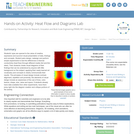
Students' eyes are opened to the value of creative, expressive and succinct visual presentation of data, findings and concepts. Student pairs design, redesign and perform simple experiments to test the differences in thermal conductivity (heat flow) through different media (foil and thin steel). Then students create visual diagrams of their findings that can be understood by anyone with little background on the subject, applying their newly learned art vocabulary and concepts to clearly communicate their results. The principles of visual design include contrast, alignment, repetition and proximity; the elements of visual design include an awareness of the use of lines, color, texture, shape, size, value and space. If students already have data available from other experiments, have them jump right into the diagram creation and critique portions of the activity.
- Subject:
- Applied Science
- Business and Communication
- Communication
- Engineering
- Material Type:
- Activity/Lab
- Provider:
- TeachEngineering
- Provider Set:
- TeachEngineering
- Author:
- Andrew Carnes
- Baratunde Cola
- Jamila Cola
- Satish Kumar
- Date Added:
- 10/14/2015
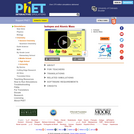
Are all atoms of an element the same? How can you tell one isotope from another? Use the sim to learn about isotopes and how abundance relates to the average atomic mass of an element.
- Subject:
- Chemistry
- Physical Science
- Material Type:
- Simulation
- Provider:
- University of Colorado Boulder
- Provider Set:
- PhET Interactive Simulations
- Author:
- Emily Moore
- John Blanco
- Kathy Perkins
- Kelly Lancaster
- Robert Parson
- Sam Reid
- Trish Loeblein
- Date Added:
- 07/18/2011
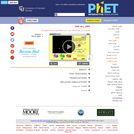
Are all atoms of an element the same? How can you tell one isotope from another? Use the sim to learn about isotopes and how abundance relates to the average atomic mass of an element.
- Subject:
- Chemistry
- Physical Science
- Material Type:
- Simulation
- Provider:
- University of Colorado Boulder
- Provider Set:
- PhET Interactive Simulations
- Author:
- Emily Moore
- John Blanco
- Kathy Perkins
- Kelly Lancaster
- Patricia Loblein
- Robert Parson
- Sam Reid
- Date Added:
- 05/13/2011
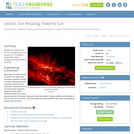
The purpose of this lesson is to introduce the students to the Sun. They explore various aspects of the Sun including its composition, its interior workings, and its relationship to the Earth.
- Subject:
- Applied Science
- Astronomy
- Engineering
- Physical Science
- Material Type:
- Activity/Lab
- Lesson Plan
- Provider:
- TeachEngineering
- Provider Set:
- TeachEngineering
- Author:
- Brian Kay
- Geoffrey Hill
- Janet Yowell
- Jessica Butterfield
- Jessica Todd
- Date Added:
- 09/18/2014

Patterns Chemistry is an instructional resource for a year-long high school introductory chemistry course. It meets many of the physical science standards from the Next Generation Science Standards, as well as some earth science standards.
The Patterns High School Science Sequence (https://hsscience4all.org/) is a three year course pathway and curriculum aligned to the Next Generation Science Standards (NGSS).
Each course utilizes:
- Common instructional strategies
- Real world phenomena
- Design challenges to engage students and support their learning.
For more information, contact us at info@pdxstem.org.
The curriculum is a combination of teacher-generated and curated open-content materials. The Teacher-generated materials are shared freely under a Attribution-NonCommercial-Sharealike Creative Commons License.
- Subject:
- Chemistry
- Physical Science
- Material Type:
- Full Course
- Provider:
- Portland Metro STEM Partnership
- Author:
- Jamie Rumage
- Date Added:
- 09/03/2020
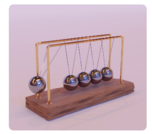
Patterns Physics is the initial course in the 3-year high school Patterns Science sequence. Patterns Physics focuses on three-dimensional (3D) learning through culturally responsive, phenomena-based storylines that intertwine the disciplinary core ideas of physics and earth science with the scientific and engineering practices and crosscutting concepts as described in the Next Generation Science Standards (NGSS).
The Patterns High School Science Sequence (https://hsscience4all.org/) is a three year course pathway and curriculum aligned to the Next Generation Science Standards (NGSS).
Each course utilizes:
- Common instructional strategies
- Real world phenomena
- Design challenges to engage students and support their learning.
For more information, contact us at info@pdxstem.org.
The curriculum is a combination of teacher-generated and curated open-content materials. The Teacher-generated materials are shared freely under a Attribution-NonCommercial-Sharealike Creative Commons License.
- Subject:
- Physical Science
- Physics
- Material Type:
- Full Course
- Provider:
- Portland Metro STEM Partnership
- Author:
- Jamie Rumage
- Date Added:
- 08/10/2020

Students learn the value of writing and art in science and engineering. They acquire vocabulary that is appropriate for explaining visual art and learn about visual design principles (contrast, alignment, repetition and proximity) and elements (lines, color, texture, shape, size, value and space) that are helpful when making visual aids. A PowerPoint(TM) presentation heightens students' awareness of the connection between art and engineering in order to improve the presentation of results, findings, concepts, information and prototype designs. Students also learn about the science and engineering research funding process that relies on effective proposal presentations, as well as some thermal conductivity / heat flow basics including the real-world example of a heat sink which prepares them for the associated activity in which they focus on creating diagrams to communicate their own collected experimental data.
- Subject:
- Applied Science
- Engineering
- English Language Arts
- Material Type:
- Lesson Plan
- Provider:
- TeachEngineering
- Provider Set:
- TeachEngineering
- Author:
- Andrew Carnes
- Baratunde Cola
- Jamila Cola
- Satish Kumar
- Date Added:
- 10/14/2015